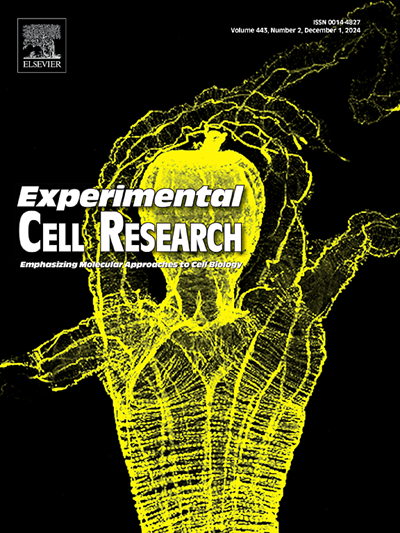三维肿瘤异质球培养和免疫治疗筛选试验的新方法。
IF 3.5
3区 生物学
Q3 CELL BIOLOGY
引用次数: 0
摘要
与传统的2D培养相比,先进的3D异质球由癌症细胞、成纤维细胞和免疫细胞组成,可作为抗癌药物筛选和免疫治疗研究的生理相关模型。本研究旨在优化异球体的培养、分离和分析,解决限制其在免疫治疗研究中广泛应用的局限性。我们的研究发现,与DMEM和RPMI培养基相比,人血浆样培养基对异质球内癌细胞和成纤维细胞的细胞活力、坏死核心形成和空间组织有显著影响。在HT-29异球细胞中,细胞活力从DMEM的75%下降到HPLM的20%,并伴有坏死核形成增加和PD-L1表达升高。TrypLE™有效地分离异质球体,但损害免疫细胞活力和表面标记检测。相比之下,Accutase™显著降低了细胞产量,而胶原酶I保留了免疫细胞标记,但影响了癌细胞的标记。此外,我们开发了一种基于荧光素酶的检测方法来测量异质球中免疫介导的癌细胞杀伤,排除非靶细胞(如垂死的成纤维细胞和免疫细胞)的信号,而不需要球体裂解或解离。我们的研究结果强调了调整实验条件以反映特定肿瘤特征的重要性,从而增强了异球体在药物发现和免疫治疗研究中的效用。本文章由计算机程序翻译,如有差异,请以英文原文为准。
Novel approaches to 3D cancer heterospheroid culture and assay development for immunotherapy screening
Advanced 3D heterospheroids, composed of cancer, fibroblast, and immune cells, serve as more physiologically relevant models for anticancer drug screening and immunotherapy research compared to traditional 2D cultures. This study aimed to optimize the culturing, dissociation, and analysis of heterospheroids, addressing limitations that restrict their broader use in immunotherapy research. Our study revealed significant effects of Human Plasma-Like culture medium on cell viability, necrotic core formation, and the spatial organization of cancer and fibroblast cells within heterospheroids compared to DMEM and RPMI media. In HT-29 heterospheroids, cell viability decreased from 75 % in DMEM to 20 % in HPLM, which was accompanied by increased necrotic core formation and elevated PD-L1 expression. TrypLE™ effectively dissociated heterospheroids but compromised immune cell viability and surface marker detection. In comparison, Accutase™ significantly reduced cell yield, while collagenase I preserved immune cell markers but affected those on cancer cells. Furthermore, we developed a luciferase-based assay to measure immune-mediated cancer cell killing in heterospheroids, excluding signals from non-target cells, such as dying fibroblasts and immune cells, without requiring spheroid lysis or dissociation. Our findings highlight the importance of tailoring experimental conditions to reflect specific tumor characteristics, thus enhancing the utility of heterospheroids in drug discovery and immunotherapy research.
求助全文
通过发布文献求助,成功后即可免费获取论文全文。
去求助
来源期刊

Experimental cell research
医学-细胞生物学
CiteScore
7.20
自引率
0.00%
发文量
295
审稿时长
30 days
期刊介绍:
Our scope includes but is not limited to areas such as: Chromosome biology; Chromatin and epigenetics; DNA repair; Gene regulation; Nuclear import-export; RNA processing; Non-coding RNAs; Organelle biology; The cytoskeleton; Intracellular trafficking; Cell-cell and cell-matrix interactions; Cell motility and migration; Cell proliferation; Cellular differentiation; Signal transduction; Programmed cell death.
 求助内容:
求助内容: 应助结果提醒方式:
应助结果提醒方式:


